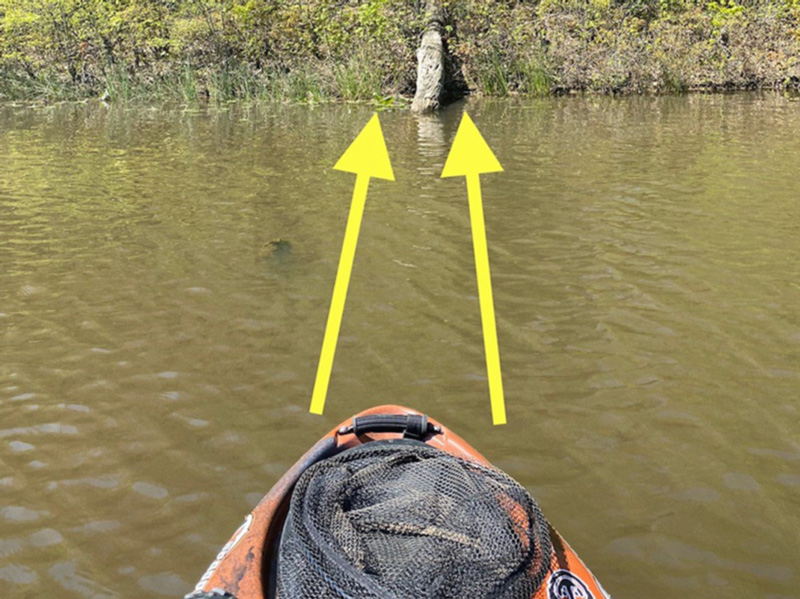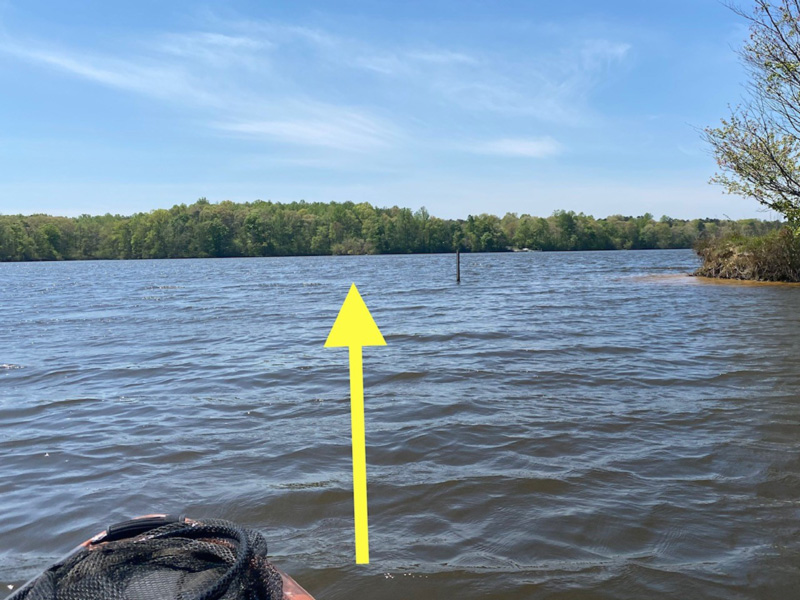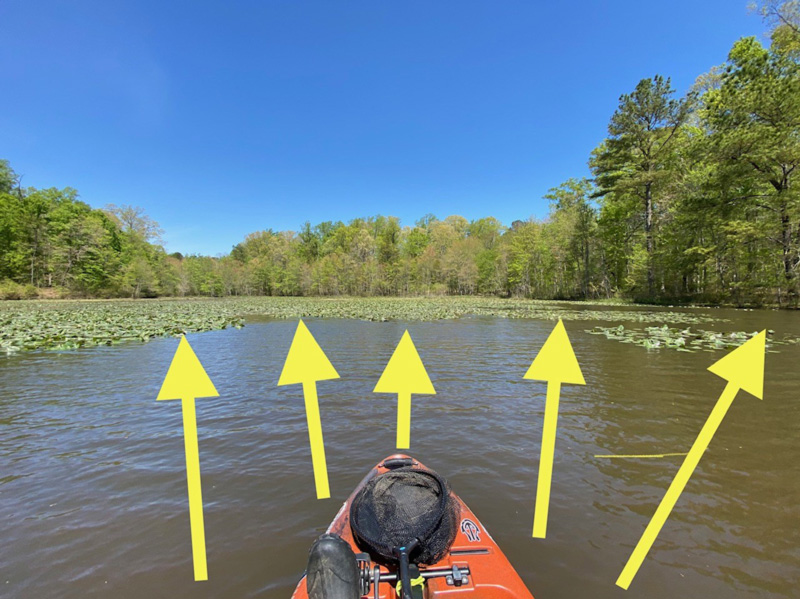Have you ever wondered why your buddy seems to out-catch you every time you go kayak fishing together? Maybe it’s as simple as where he positions his kayak while taking a cast toward a point, laydown, or the shoreline. Improving your boat positioning skills is one sure-fire way to improve your catch ratio.

Laydowns
Let’s start with laydowns, one of my favorite structures. As I move my kayak towards a laydown I look at what’s exposed above the waterline. I position my kayak where I can take a cast near the tree where it enters water. Then I retrieve my bait parallel to the tree, repeating a cast along the opposite side of the laydown. At times I will pause my retrieve and let my bait drop, as this may generate a strike from a fish that has hidden under the tree.
I also estimate the distance a laydown extends into the water. I’ll position my kayak maybe 20 feet out from it, then I’ll take a cast to where I visualize the tree is positioned below the surface. Casting to where my retrieve covers the canopy of the tree, I’m hoping to draw out any fish hiding in the submerged tree limbs.

Points of Land
As I approach a point I will position my kayak one of two ways. I like to start by coming up to a point straightaway, so I can make a cast to either side and then start a fan-cast pattern and work my way to the opposite side of the point. This allows you to cover all the possible depths of the point. Once I get some bites and can ID the depth the fish are at in the water column, then that information can be used as a starting point while fishing other points in the lake.
On days where there’s wind you can position your kayak on the leeward side of a point, then cast into the wind, bringing your bait across the point. Fish will normally face into the current or wind (which can drive current) then rise to take the bait. If you position your kayak on the windward side of the point, you may miss fish because the bait will be traveling from behind the fish and they may not see it or they may not chase it down.

Weed beds and Lily Pads
I fish weed beds and lily pads in similar fashion, with one exception. When you approach a weed bed you want to be careful not to park your boat over the fish. In a kayak it’s very easy to do this by accident because a kayak will want to keep drifting toward your target. You want to approach very slowly and stop your kayaks’ drift.
I also position my kayak where I’m able to cast parallel to weeds or pads. I’ll throw a weedless swimbait, letting it sink and then retrieving with slight pauses during the retrieve, or with quick twitches of the rod tip. Fish hiding in the cover then dart out to attack.
I feel the most exciting way to fish lily pads is with a weedless topwater frog, simply casting into the pads and working the bait back to the boat. In that case, sometimes I’ll park my kayak in the pads to keep myself from drifting. Over a grass bed you will need to stop short of the bed and make casts over the grass, working your bait just over the top of the grass.
You can also enhance your outing by using an anchor, pole anchor, or kayak stake pole. When the winds are up these tools are a great way to keep yourself in the perfect position. Think ahead when you are approaching a section of water, and make a conscious decision about how you will approach the spot. Positioning your kayak correctly will produce more, bigger fish. And remember, a cast not taken is a fish not caught.
-By Eric Packard